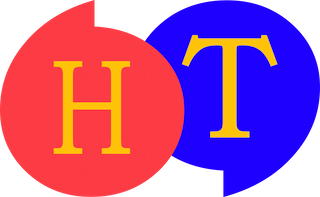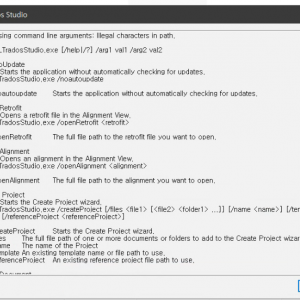CAT tools are important not only for beginning translators but for those who have been working for a long time in their fields. CAT tools can be a headache for translators who aren’t used to computers and technology. They present an obstacle we must overcome. However, once you conquer them, you will learn to love them as they will increase your productivity by surprising amounts.

In this section, I will briefly introduce the current situation in the CAT tool market, and suggest a good CAT tool based on my standards.
I searched for all the current available CAT tools in the market and found 29 (Wikibooks).
- Across
- AnyMem
- AppleTrans
- Cafetran
- DéjàVu 3
- DéjàVu X
- Felix
- Fluency
- Heartsome CAT Bundle
- Heartsome Translation Studio
- MemoQ
- Metatexis
- Mneme
- MultiTrans
- Okapi Framework
- OmegaT
- Open Language Tools
- SDL Trados
- STAR Transit
- Similis
- Termbases.eu
- TM-Database
- Transolution
- Virtaal
- Visual-Localize
- Wordfast
- Wordfast free version (dated 21 September 2002)
- Wordfisher
- Crowdin
This is probably not the entire list, however, as more are being developed. No one CAT tool will be able to satisfy all the various needs and demands of translators, and CAT tools continuously evolve and develop based on trends and competition in the market.
SDL Trados is currently the market leader. It’s difficult to know their exact market share, but they’ve succeeded in giving the impression that they are at the top through good marketing. This company wants people to use the term ‘CAT tool’ and ‘Trados’ interchangeably, in the same way Xerox used the term ‘Xerox’ and ‘copy’ interchangeably. This caught on, and people started to say: “I will xerox it.” FedEx has done the same. FedEx wants people to say ‘FedEx it’ instead of ‘mail it.’ I don’t know if FedEx will succeed, but if they do, they will solidify their position in the market. That means, people will will think of FedEx first when they think of parcel delivery services. This is what Trados is trying to do as well. There are a few reasons why it seems Trados has achieved a leading position in the CAT tool market.
1. It’s the most well-known CAT tool among agencies
I don’t know how Trados markets to agencies, whether they’ve provided the tool for free or something like that, but agencies know SDL Trados best. Recently, an agency I work with that hadn’t really paid attention to CAT tools in the past started to ask for “Trados files”. (Actually, the fact that this agency asked for a Trados file shows that they are inexperienced with the software. There are many files that can be generated with Trados, but there is no such file name. If they knew what they were doing, they would be talking about sdlxliff file or return package.) But, as you know, agencies have no translation skills. There are small advantages when they attempt to use CAT tools to connect the translator with the proofreader, but this is a function that can be performed just fine using Word. (Other functions such as calculating segment repetitions, TM use, etc. can also be done using all other CAT tools, too.) I get the sense that inexperienced agencies are being lured by SDL Trados’ marketing efforts. I’m amused and frustrated at the same time. But there’s not much I can do; I’m just one person, after all.
2. Agencies often post job notifications that require the translator to have Trados
This can cause newcomers in the translation market to worry. They end up buying SDL Trados at its high price, thinking, “I won’t be able to do anything in this market without this.” (I did the same, too. I feel frustrated just thinking about it…)

I wonder if such job notifications are really authentic. Most CAT tools can use .tmx files to exchange memory. It doesn’t make sense that the translator needs to have SDL Trados to work on a job. Of course, there are advantages of having the same software with others working in the same project, but I think these are insignificant. Nonetheless, I think SDL Trados sells well for these reasons. [I think most CAT tools can also read .sdlxliff files. I would say agencies that prefer Trados packages are the one case in which the translator needs Trados to work with them. The same goes with MemoQ. These two CAT tools are popular but you need the right version of them for collaboration. What a pain! Anyway, unless you’re very confident that you’ll be working with that agency for quite a while, it’s rarely worth it to buy a specific CAT tool just to suit their needs.]
You probably think that I’m against one software dominating the market. You bet I am. It’s okay for any software to rank first place in the market, but if one software overtakes the market entirely, it will only cause the customer (translators and agencies) to lose. [bctt tweet=”If one software overtakes the market entirely, it will only cause translators and agencies to lose.” username=””] There are some other reasons I don’t want SDL Trados to overshadow the market.
- Their price. On top of their already high price, you also need to “upgrade” the software after about two years, and of course you have to pay for it. (But if you have a receipt for the previous version you purchased, you do get a discount.)
- Other new and less developed software should not be barred from entering the market. New software must be allowed some place in the market in order to foster competition and promote technological development. This way, a translator’s productivity will be further increased in the long run.
- Lastly, I can’t shake my suspicion that SDL Trados is catering more towards agencies than translators. I have a feeling that SDL Trados is trying to develop a software for agencies where they can manage their projects.
I’m not a software expert, so I may not be the best judge, but I do know translation. A translator needs to refer to a dictionary again and again while he or she is translating, as well as websites that contain specialized information for different subjects. However, the CAT tool will normally take up an entire screen. This means that unless you work with two computer screens side by side, you have to exit the CAT tool screen, open other windows to look up dictionaries and websites, and return to the CAT tool screen. Even if you do this just 50 times for each project, that adds up to a lot of time. You’ll also experience a small re-booting process in your mind every time you do this and waste your energy. There’s also the downside that you won’t be able to look at definitions and explanations of specific terminology while you are working on your translation (because you’ve already minimized and exited the CAT tool screen). This is a huge inconvenience.
There is a solution to this, however: include internet resources within CAT tools. You will understand how significant this adjustment can be when you try working with CAT tools yourself. (A side note for those who are inexperienced with CAT tools: adding internet resources in CAT tools does not make them online CAT tools. They are two different things.) In sum, I’m against SDL Trados dominating the market not because they occupy the first place in the market but because they do not truly understand or consider the translator’s work process. I also don’t like their high prices. Lastly, I don’t like it when people confuse ‘SDL Trados’ with ‘CAT tool’. (although I’m not entirely sure whether that’s because of the superb marketing power of the SDL Trados company or because of ill-informed PMs).








